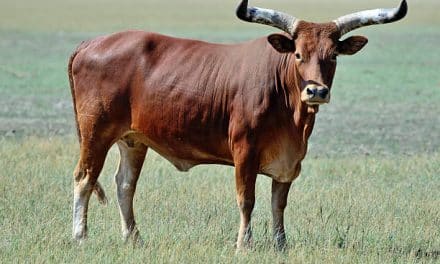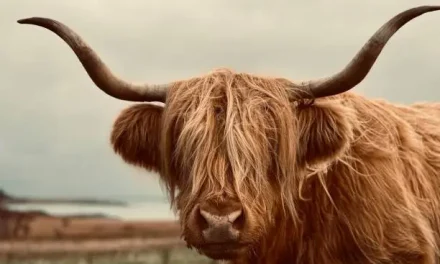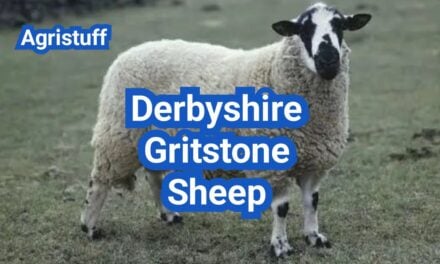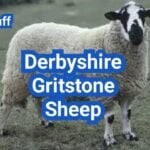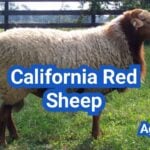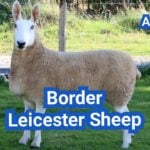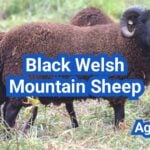The Texas Longhorn is an iconic American breed of beef cattle known for its distinctive long horns, which can span over 8 feet from tip to tip. Originating from cattle brought to the Americas by Spanish conquistadors, this breed has a rich history and has become a symbol of American heritage.
The Texas Longhorn Cattle breed is not only a testament to the country’s cattle history but also a cultural icon representing the spirit of the American West. With its robust build and impressive horns, it has become an integral part of American folklore.
Key Takeaways
- The Texas Longhorn is an American breed of beef cattle.
- It is characterized by its long horns, which can span more than 8 feet.
- The breed originated from cattle brought by Spanish conquistadors.
- Texas Longhorns are a symbol of American heritage and the spirit of the American West.
- They are known for their robust build and distinctive horns.
The Legacy of Texas Longhorn Cattle
The Texas Longhorn cattle breed has a rich history that spans centuries, deeply intertwining with the development of the American West. This breed’s legacy is not just about its physical characteristics but also its significant role in shaping the cultural and agricultural landscape of the United States.
The Texas Longhorn’s history began with the arrival of Spanish conquistadors in the Americas, who brought with them cattle that would eventually evolve into the Texas Longhorn breed. Over time, these cattle adapted to the harsh conditions of the American frontier, developing a unique hardiness that would become one of their defining traits.
The Iconic American Breed
The Texas Longhorn is often regarded as an iconic American breed, symbolizing the spirit of the American West. Its image has been immortalized in literature, art, and popular culture, representing independence, resilience, and a connection to the land.
Historical Significance in American West
The historical significance of the Texas Longhorn cattle in the American West cannot be overstated. They played a crucial role in the cattle industry, with their ability to thrive in challenging environments making them ideal for ranching. The breed’s influence on the development of the American cattle industry is a testament to its importance.
| Characteristics | Description | Significance |
|---|---|---|
| Hardiness | Ability to thrive in harsh conditions | Allowed the breed to flourish in the American West |
| Adaptability | Capacity to adapt to different environments | Made the breed suitable for various ranching conditions |
| Historical Impact | Significant role in the cattle industry | Contributed to the development of the American West |
In conclusion, the Texas Longhorn cattle breed is not only a symbol of American heritage but also a living testament to the history and resilience of the American West. Its legacy continues to be celebrated through conservation efforts and its enduring presence in American culture.
Origin and Historical Development of Longhorn Cattle

Originating from Spanish cattle introduced to the Americas, the Texas Longhorn has evolved significantly over the centuries. The breed’s history is deeply intertwined with the early Spanish conquests and settlements in the New World.
Spanish Roots and Introduction to America
The first cattle were brought to the Americas in 1493 by the Spanish to the Caribbean island of La Isla Española, now known as Hispaniola. Over the next two centuries, the Spaniards expanded their cattle operations into Mexico and gradually moved northward with their expanding settlements. This marked the beginning of the Longhorn cattle’s journey in North America.
Spanish cattle played a crucial role in the development of the Texas Longhorn breed, bringing with them characteristics that would prove vital in the harsh environments of the American frontier.
Evolution Through Natural Selection
As the Spanish cattle moved north, they faced new challenges and environments. Natural selection played a significant role in shaping the breed, favoring those with traits that enabled them to survive and thrive in the rugged conditions of the American West.
The Texas Longhorn’s ability to adapt to diverse environments was a key factor in its survival. Through this process of natural selection, the breed developed robust health and hardiness, characteristics that are still valued today.
Near Extinction and Conservation Efforts
Despite its historical significance and adaptability, the Texas Longhorn faced near extinction in the late 19th and early 20th centuries due to crossbreeding with other cattle breeds and the decline of the open range. Conservation efforts were initiated to preserve the breed, recognizing its unique heritage and qualities.
Conservation programs were established to protect and promote the Texas Longhorn breed. These efforts not only helped to save the breed from extinction but also ensured its continued development and preservation for future generations.
The historical development of the Texas Longhorn cattle is a testament to the breed’s resilience and the importance of conservation efforts. Today, the breed is celebrated for its historical significance, unique characteristics, and the role it plays in American cattle ranching.
Physical Characteristics of Texas Longhorn Cattle
Texas Longhorn cattle are renowned for their impressive physical attributes, which have been shaped by centuries of adaptation to the harsh environments of the American Southwest. Their distinctive features make them a popular choice among cattle breeders and enthusiasts alike.
Distinctive Horn Features
One of the most striking physical characteristics of Texas Longhorns is their horns, which can span over 8 feet from tip to tip in some individuals. The horns of bulls are generally of moderate length, while those of steers can be much longer. This unique feature is not only aesthetically pleasing but also serves as a defense mechanism against predators.
Horn Measurement: The horn span of Texas Longhorns is a notable characteristic, with some exceptional individuals boasting spans of over 7 feet. This trait is highly valued among breeders and is often considered a hallmark of the breed.
Coat Colors and Patterns
Texas Longhorns exhibit a wide range of coat colors and patterns, making each individual unique. The breed can display any color or mix of colors, with approximately 40% of the cattle having some shade of red, often a light red. This diversity in coat color adds to the breed’s visual appeal and makes them a favorite among cattle enthusiasts.
“The diversity in coat color and pattern is one of the defining characteristics of Texas Longhorn cattle, making each animal a unique specimen.”
Size and Body Structure
Texas Longhorns are known for their robust body structure, which is well-suited to their historical role as range cattle. They are generally lean and muscular, with a sturdy build that enables them to thrive in challenging environments.
| Characteristic | Description |
|---|---|
| Horn Span | Up to 8 feet or more |
| Coat Color | Varied, including red, black, white, and mixes |
| Body Structure | Robust, lean, and muscular |
The combination of distinctive horn features, varied coat colors, and robust body structure makes Texas Longhorn cattle a truly unique and valuable breed.
Temperament and Behavioral Traits

Texas Longhorns are celebrated for their exceptional temperament, marked by natural docility and strong maternal instincts. This breed is known for being easy to handle and highly adaptable to various environments.
Natural Docility
One of the standout characteristics of Texas Longhorn cattle is their natural docility. They are generally calm and gentle, making them an excellent choice for breeders who prioritize ease of handling.
Intelligence and Adaptability
Texas Longhorns are not only docile but also highly intelligent and adaptable. Their ability to thrive in diverse conditions is a testament to their robust nature and versatility.
Maternal Instincts
The strong maternal instincts of Texas Longhorn cows are another significant advantage. They are protective of their calves and have a high reproductive efficiency, which contributes to the breed’s popularity.
The following table summarizes the key temperament and behavioral traits of Texas Longhorn cattle:
| Trait | Description | Benefit |
|---|---|---|
| Natural Docility | Calm and gentle nature | Ease of handling |
| Intelligence | High cognitive ability | Adaptability to diverse environments |
| Maternal Instincts | Strong protective instincts | High reproductive efficiency |
Overall, the temperament and behavioral traits of Texas Longhorn cattle make them an attractive choice for many breeders. Their unique combination of docility, intelligence, and strong maternal instincts sets them apart from other breeds.
Understanding Longhorn Cattle Breeds
The fascinating history and diverse characteristics of Longhorn cattle breeds make them a compelling topic for exploration. Longhorn cattle have been a part of the agricultural landscape for centuries, with various breeds emerging due to geographical and historical factors.
Texas Longhorn: The American Icon
The Texas Longhorn is one of the most recognized Longhorn breeds, known for its distinctive horns and robust build. Originating from Spanish cattle brought to the Americas, the Texas Longhorn has evolved into a symbol of American heritage. Its genetic closeness to Iberian cattle breeds highlights its Spanish roots.
Key Characteristics of Texas Longhorn:
- Distinctive horn span
- Robust body structure
- Diverse coat colors
English Longhorn: The British Counterpart
The English Longhorn, on the other hand, has its own unique history and characteristics, shaped by centuries of selective breeding in Britain. Known for its longevity and hardiness, the English Longhorn is valued for its milk and meat production.
Notable Traits of English Longhorn:
- Longevity and hardiness
- Milk and meat production capabilities
- Distinctive horn shape and size
Comparison with Other Cattle Breeds
When comparing Longhorn breeds to other cattle breeds, several factors come into play, including hardiness, production capabilities, and historical significance. The following table provides a comparison of Texas Longhorn, English Longhorn, and another prominent breed, the Angus.
| Breed | Origin | Primary Use | Notable Characteristics |
|---|---|---|---|
| Texas Longhorn | USA | Beef | Robust, distinctive horns, diverse coat colors |
| English Longhorn | UK | Milk and Beef | Longevity, hardiness, distinctive horns |
| Angus | Scotland | Beef | High-quality beef, black coat, polled |
Understanding these differences is crucial for breeders and enthusiasts looking to appreciate or work with these breeds. Each breed has its unique advantages and historical context, contributing to the rich tapestry of cattle breeding.
Breeding Practices for Longhorn Cattle

To breed Longhorn cattle successfully, one must balance the desire for specific characteristics with the need to maintain the breed’s overall health and viability. Breeding Longhorn cattle is a complex process that involves careful planning and consideration of several key factors.
Selection Criteria for Breeding Stock
The selection of breeding stock is a critical component of Longhorn cattle breeding. Breeders typically select cattle based on desirable traits such as horn length, coat color, and fertility. These characteristics not only define the breed’s appearance but also contribute to its hardiness and ability to thrive in various environments.
The process of selecting breeding stock involves evaluating the cattle’s physical attributes, performance records, and pedigree information. By considering these factors, breeders can make informed decisions that enhance the breed’s quality and consistency.
Genetic Considerations
Genetic considerations play a vital role in Longhorn cattle breeding. Maintaining the genetic diversity of the breed is essential to ensure its long-term viability. Breeders must be mindful of the potential for genetic disorders and work to minimize their occurrence through careful selection and breeding practices.
Understanding the genetic makeup of the breeding stock is crucial for making informed breeding decisions. This includes analyzing the cattle’s genetic traits, such as those related to fertility, growth rate, and disease resistance.
Maintaining Breed Purity
Maintaining the purity of the Texas Longhorn breed is a key objective for many breeders. This involves adhering to strict breeding standards and ensuring that the cattle’s lineage is accurately documented.
Breeders must balance the need to preserve the breed’s traditional characteristics with the desire to introduce new traits that can enhance its overall quality and performance. By doing so, they can ensure the continued health and viability of the Texas Longhorn breed.
Reproductive Advantages of Texas Longhorns

Texas Longhorn cattle are renowned for their exceptional reproductive capabilities, making them a valuable asset in cattle breeding programs. Their reproductive advantages are multifaceted, contributing significantly to their popularity among breeders.
Superior Fertility Rates
One of the standout features of Texas Longhorns is their superior fertility rates. Heifers of this breed have been known to conceive while still nursing their mothers and can produce a calf without assistance before they are even 16 months old. This early fertility is a significant advantage, allowing for quicker turnaround times in breeding programs.
High fertility rates in Texas Longhorns are not just limited to young heifers. The breed maintains its fertility well into maturity, ensuring a long productive life for breeding females. This trait is invaluable for sustainable cattle production.
Exceptional Calving Ease
Texas Longhorns are also celebrated for their exceptional calving ease. The breed’s history of natural selection has favored individuals with characteristics that make calving unassisted and relatively easy. This trait reduces the need for veterinary interventions during calving, lowering costs and stress on the animals.
- Easy calving reduces the risk of complications.
- Less need for veterinary assistance during births.
- Newborn calves are typically robust and healthy.
Longevity and Reproductive Lifespan
The longevity and reproductive lifespan of Texas Longhorns are other critical reproductive advantages. Females often remain productive well into their teens, and some have been known to produce calves into their late teens or early twenties. This extended reproductive life maximizes the return on investment for breeders.
“The longevity of Texas Longhorns, combined with their fertility, makes them an extremely valuable breed for cattle producers looking to maintain a sustainable and profitable operation.”
By leveraging these reproductive advantages, breeders can enhance the efficiency and sustainability of their cattle operations. Texas Longhorns offer a compelling option for those looking to capitalize on superior fertility, calving ease, and longevity.
Crossbreeding with Longhorn Cattle
Longhorn cattle crossbreeding offers a viable strategy for improving the overall quality and resilience of cattle herds. By combining Longhorns with other breeds, farmers can leverage hybrid vigor to boost productivity and hardiness.
Popular Crossbreeding Combinations
Crossbreeding Longhorns with other beef breeds is a common practice aimed at enhancing meat production while retaining the hardiness of Longhorns. Some popular combinations include:
- Longhorn x Angus: Known for high-quality beef and improved marbling.
- Longhorn x Hereford: Combines the hardiness of Longhorns with the premium beef quality of Herefords.
- Longhorn x Simmental: Results in cattle with improved growth rates and muscle mass.
| Crossbreeding Combination | Benefits | Characteristics |
|---|---|---|
| Longhorn x Angus | High-quality beef, improved marbling | Hardiness, fertility |
| Longhorn x Hereford | Premium beef quality, hardiness | Docility, growth rate |
| Longhorn x Simmental | Improved growth rates, muscle mass | Robustness, fertility |
Hybrid Vigor Benefits
Hybrid vigor resulting from crossbreeding can lead to improved fertility rates, faster growth rates, and increased resistance to diseases. This phenomenon occurs because the offspring benefit from the genetic diversity of their parents, making them more robust and productive.
Maintaining Desirable Traits
While crossbreeding, it’s crucial to maintain the desirable traits of Longhorn cattle, such as their adaptability and disease resistance. Selective breeding practices can help achieve this balance, ensuring that the resulting cattle retain the beneficial characteristics of Longhorns while gaining new advantages from the other breed.
By carefully planning and executing crossbreeding programs, farmers can create cattle herds that are not only more productive but also more resilient to environmental challenges.
Raising Longhorn Cattle in the U.S.

Longhorn cattle are renowned for their hardiness and ability to thrive in different parts of the country. This adaptability makes them an attractive choice for breeders across the United States.
Regional Adaptability
One of the key advantages of Longhorn cattle is their ability to adapt to various regions. From the dry climates of Texas to the more temperate zones of the Midwest, Longhorns have shown they can flourish in diverse environments. This regional adaptability is largely due to their Spanish origins, which have endowed them with a robust genetic makeup.
Regional considerations include understanding local grazing practices, disease prevalence, and climate extremes. Breeders must be aware of these factors to successfully raise Longhorn cattle.
Land and Space Requirements
Longhorn cattle require less specific land and space compared to some other breeds. They are well-suited to grazing on rangelands and can thrive on a variety of forage types. However, adequate space is necessary to prevent overgrazing and ensure the health of the cattle.
- Adequate pasture size is crucial for maintaining healthy Longhorn cattle.
- Rotational grazing practices can help manage land use effectively.
- Space requirements will vary based on factors like climate, forage quality, and cattle density.
Climate Considerations
While Longhorn cattle are adaptable, extreme climates can still pose challenges. Hot and dry conditions require special management, such as providing shade and adequate water supply. In colder climates, ensuring proper shelter and nutrition is vital.
Understanding the local climate and preparing accordingly is essential for the well-being of the cattle. This includes being prepared for seasonal changes and potential weather extremes.
Grazing Management for Longhorn Cattle

Grazing management plays a vital role in maintaining the well-being of Longhorn cattle. Effective grazing practices not only ensure the health of the cattle but also contribute to the sustainability of the land.
Browsing Habits and Preferences
Longhorn cattle are known for their diverse browsing habits, consuming a wide range of grasses, plants, and weeds. This adaptability makes them well-suited to various grazing environments. Their browsing habits can significantly impact the ecosystem, promoting biodiversity and reducing the need for external feed inputs.
As noted by a renowned cattle expert,
“Longhorn cattle are browsers rather than grazers, meaning they eat a variety of plants, including shrubs and trees, in addition to grasses.”
This characteristic allows them to thrive in diverse grazing conditions.
Sustainable Grazing Practices
Implementing sustainable grazing practices is essential for maintaining the health of both the Longhorn cattle and the grazing land. Rotational grazing is a highly effective strategy, allowing pastures to recover and reducing the risk of overgrazing.
- Rotate pastures to maintain soil health and promote regrowth.
- Monitor grazing pressure to avoid overgrazing.
- Maintain adequate forage quality and quantity.
Seasonal Feeding Considerations
Seasonal variations in forage quality and availability necessitate careful feeding management. During periods of drought or winter, supplementary feeding may be required to ensure the nutritional needs of Longhorn cattle are met. Understanding the nutritional requirements of Longhorns at different stages of their life cycle is crucial for optimal feeding strategies.
By adopting a comprehensive grazing management plan that considers the browsing habits, sustainable practices, and seasonal feeding needs of Longhorn cattle, ranchers can enhance the productivity and sustainability of their operations.
Health and Hardiness of Longhorn Cattle

Longhorn cattle have gained a reputation for their hardiness and natural resistance to diseases, reducing the need for extensive veterinary care. This inherent robustness is a significant factor in their appeal to breeders and ranchers.
Natural Disease Resistance
One of the key advantages of Longhorn cattle is their natural disease resistance. This trait is crucial in reducing the reliance on antibiotics and other medications, making them a more sustainable choice for cattle breeding.
Disease Resistance Mechanisms
- Genetic predisposition to fight off common cattle diseases
- Robust immune system developed through natural selection
- Lower incidence of disease due to hardiness
Low Maintenance Requirements
Longhorn cattle are known for their low maintenance needs. They require less feed supplementation and veterinary care compared to other breeds, making them an economical choice for ranchers.
| Maintenance Aspect | Longhorn Cattle | Other Breeds |
|---|---|---|
| Feed Supplementation | Low | Moderate to High |
| Veterinary Care | Minimal | Regular |
Adaptability to Diverse Environments
The adaptability of Longhorn cattle to various climates and environments is a testament to their hardiness. They can thrive in conditions that might be challenging for other breeds.
The combination of natural disease resistance, low maintenance requirements, and adaptability makes Longhorn cattle an attractive option for those involved in cattle breeding and ranching.
Texas Longhorn Beef: Production and Marketing

The lean meat profile and distinct flavor of Texas Longhorn beef make it an attractive option for health-conscious consumers. As the demand for premium and nutritious beef products continues to grow, Texas Longhorn beef is well-positioned to capitalize on this trend.
Lean Meat Profile and Nutritional Benefits
Texas Longhorn beef is renowned for its lean meat profile, which is lower in fat compared to other beef breeds. This characteristic not only appeals to consumers looking for healthier meat options but also offers producers the opportunity to market their products as premium and nutritious. The nutritional benefits of Texas Longhorn beef include high protein content, lower calorie count, and rich in essential micronutrients.
Nutritional Highlights:
- High protein content
- Lower in fat and calories
- Rich in essential micronutrients like iron and zinc
Flavor Characteristics
The unique flavor profile of Texas Longhorn beef is another significant factor contributing to its popularity. The beef is known for its tenderness and rich, beefy flavor, which is often described as more complex and satisfying than other breeds. This distinct flavor characteristic is attributed to the breed’s genetic makeup and the traditional ranching practices used in its production.
“The flavor of Texas Longhorn beef is a testament to the breed’s heritage and the careful husbandry practices of ranchers.”
Niche Marketing Opportunities
Producers of Texas Longhorn beef can capitalize on niche marketing opportunities by emphasizing the breed’s heritage, the lean and nutritious profile of the meat, and the unique flavor characteristics. By targeting consumers who are willing to pay a premium for high-quality, sustainably produced beef, producers can create a lucrative market for their products.
Niche marketing strategies can include highlighting the historical significance of the Texas Longhorn breed, the sustainable grazing practices used in its production, and the superior nutritional profile of the beef.
Economic Benefits of Raising Longhorns

The economic advantages of Longhorn cattle breeding are multifaceted, including lower costs and diverse income sources. Raising Texas Longhorns can be a profitable venture due to their hardiness, lower input costs, and the potential for generating revenue through various channels.
Low Input Costs Compared to Other Breeds
One of the significant economic benefits of raising Longhorns is their low input costs. They require less feed and healthcare compared to some other breeds, making them an economically viable choice for breeders. Their hardiness and adaptability to diverse environments reduce the need for costly interventions.
For instance, a comparison of input costs for different cattle breeds reveals that Longhorns have a lower cost per head. The table below illustrates the cost differences:
| Breed | Feed Cost per Head | Healthcare Cost per Head | Total Input Cost per Head |
|---|---|---|---|
| Texas Longhorn | $150 | $50 | $200 |
| Angus | $200 | $70 | $270 |
| Hereford | $220 | $80 | $300 |
Multiple Revenue Streams
Breeders can generate revenue through multiple channels when raising Longhorns. These include sales of beef, breeding stock, and even tourism-related activities such as ranch tours. The versatility of Longhorns in providing various products and services enhances their economic appeal.
For example, the sale of Longhorn breeding stock can command a premium price due to their heritage value and desirable traits. Additionally, the lean meat profile of Longhorn beef makes it a sought-after product in niche markets.
Heritage Breed Market Value
The heritage breed status of Texas Longhorns adds to their market value. Breeders can capitalize on the historical significance and unique characteristics of Longhorns to attract premium prices for their cattle. This heritage value is not only a marketing advantage but also contributes to the conservation of this iconic breed.
By understanding and leveraging these economic benefits, breeders can make informed decisions about raising Texas Longhorns, potentially leading to a more profitable and sustainable cattle breeding operation.
The Future of Texas Longhorn Cattle
The Texas Longhorn Cattle breed is an integral part of the cultural heritage of Texas and the U.S. With its rich history and unique characteristics, it continues to be valued for its historical significance and adaptability. Conservation efforts and breeding programs are in place to ensure the breed’s continued viability, securing its future for generations to come.
As a heritage cattle breed, the Texas Longhorn is recognized for its exceptional qualities, including its distinctive horn features, coat colors, and hardiness. The breed’s future is further supported by its reproductive advantages, low maintenance requirements, and the growing interest in niche marketing opportunities for Longhorn beef.
The ongoing promotion and preservation of the Texas Longhorn Cattle breed are crucial to its continued success. With its strong cultural significance and the efforts of breeders and conservationists, the Texas Longhorn is poised to remain a vital part of American agricultural heritage.
FAQ
What is the origin of the Texas Longhorn Cattle breed?
The Texas Longhorn Cattle breed originated from cattle brought by Spanish conquistadors to the Americas.
What are the distinctive physical characteristics of Texas Longhorn Cattle?
Texas Longhorn Cattle are known for their long horns, varied coat colors, and robust body structure.
Are Texas Longhorns easy to handle?
Yes, Texas Longhorns are known for their docile temperament and intelligent nature, making them easy to handle.
What are the reproductive advantages of Texas Longhorns?
Texas Longhorns have high fertility rates, ease of calving, and a long reproductive lifespan, making them highly valued among cattle breeders.
Can Longhorn Cattle be crossbred with other breeds?
Yes, crossbreeding with Longhorn Cattle can be beneficial, resulting in hybrid vigor and more robust offspring.
What are the benefits of raising Longhorn Cattle in the U.S.?
Raising Longhorn Cattle can be done in various regions due to their adaptability, and they offer low input costs and multiple revenue streams.
How should grazing be managed for Longhorn Cattle?
Effective grazing management involves understanding their browsing habits, implementing sustainable grazing practices, and considering seasonal feeding.
Are Longhorn Cattle disease-resistant?
Yes, Longhorn Cattle are known for their natural disease resistance and low maintenance requirements.
What are the advantages of Texas Longhorn beef?
Texas Longhorn beef offers a lean meat profile, unique flavor characteristics, and nutritional benefits, making it a popular choice among consumers.
Why are Texas Longhorns considered a heritage breed?
Texas Longhorns are considered a heritage breed due to their historical significance, unique characteristics, and cultural importance.
What is the future of the Texas Longhorn Cattle breed?
The Texas Longhorn Cattle breed has a bright future due to ongoing conservation efforts and its cultural significance.
How do Texas Longhorns compare to other cattle breeds?
Texas Longhorns are known for their hardiness, fertility, and ease of calving, making them a valuable choice among cattle breeders.
What are the horn-related characteristics of Longhorn Cattle?
Longhorn Cattle are known for their distinctive horns, which can span over 8 feet from tip to tip.
Conclusion of: Texas Longhorn Cattle
Overview: why Longhorn Cattle still matter in the U.S.
Longhorn Cattle are an American icon and a practical, adaptable beef breed that fits small farms and large ranches alike; from their legendary horns to thriftiness on rough forage, Longhorn Cattle offer calving ease, hardiness, and unique marketing angles for U.S. producers. Oklahoma State University – Texas Longhorn Cattle
History & origin of Longhorn Cattle
The story of Longhorn Cattle begins with cattle brought by Spanish explorers; centuries of open-range life and natural selection forged the type we recognize today as Texas Longhorn Cattle, which later powered the great trail drives after the Civil War. Texas State Historical Association – Cattle Industry
Near-extinction and the conservation comeback
By the early 1900s, Longhorn Cattle nearly vanished due to crossbreeding and changing market demands, until federal conservation efforts re-established foundation herds—famously associated with the Wichita Mountains refuge—preserving Longhorn Cattle as a living genetic resource. Wichita Mountains Wildlife Refuge (NPS)
Longhorn Cattle as an official Texas symbol
Longhorn Cattle are more than a breed—they’re a state symbol; in 1995 the Texas Legislature designated the longhorn as the official Large Mammal of Texas, reflecting how Longhorn Cattle helped shape the state’s ranching heritage. Texas Legislature – HCR 178 (1995)
Defining features of Longhorn Cattle
From “paint” hides to sweeping horn shapes, Longhorn Cattle show remarkable color variety and horn expression, while hallmark traits—calving ease, fertility, disease/parasite tolerance, and longevity—make Longhorn Cattle valuable in many production environments. Texas Longhorn Breeders Association of America – The Longhorn Breed
How horns are measured in Longhorn Cattle
Horn talk is serious with Longhorn Cattle; industry standards include Tip-to-Tip (TTT), Total Horn (TH), Composite (COMP), and Twist, allowing fair comparisons and selection of horn genetics in competitive Longhorn Cattle programs. TLBAA – Horn Showcase & measuring rules
Adaptability of Longhorn Cattle to U.S. climates
Whether on humid coasts or semi-arid plains, Longhorn Cattle cope with heat, cold, and sparse forage better than many breeds; this adaptability helps Longhorn Cattle maintain condition where inputs must stay low. TLBAA – Benefits of the Breed
Calving ease: where Longhorn Cattle really shine
For first-calf heifers, Longhorn Cattle sires are often used to reduce dystocia thanks to lower birth weights and good maternal pelvic capacity, making Longhorn Cattle a sound choice for heifer breeding. Texas A&M AgriLife – Texas Adapted Genetic Strategies
Fertility, longevity, and hybrid vigor
Producers value Longhorn Cattle for reproductive efficiency and cows that remain productive for many years, while crossbreeding with Longhorn Cattle can inject hybrid vigor and genetic diversity into commercial herds. OSU – Longhorn overview
Grazing behavior & low-input management
Because they evolved on sparse rangelands, Longhorn Cattle are efficient browsers and grazers that utilize brush and coarse forage, fitting regenerative and low-input systems where Longhorn Cattle help improve range resilience. USDA NRCS – Grazing plans & practices
Meat quality & marketing niches
Lean carcasses and a compelling heritage story give Longhorn Cattle a niche in direct-to-consumer markets; branding around grass-finishing and animal welfare resonates with U.S. buyers of Longhorn Cattle beef. TLBAA – Lean beef & markets
Breeding goals for seedstock Longhorn Cattle
In seedstock herds, selection balances horn set, structural soundness, fertility, udder quality, disposition, and color; successful Longhorn Cattle programs prioritize function first, then refine horn and color traits. TLBAA – The Longhorn Breed (selection)
Crossbreeding strategies with Longhorn Cattle
Using a Longhorn Cattle bull on British or Continental heifers can reduce assisted births while preserving growth in terminal crosses, and rotational systems incorporating Longhorn Cattle help maintain adaptability and reproductive efficiency. Oklahoma State Extension – Crossbreeding systems
Facilities & handling considerations for horned cattle
Design working alleys and crowd pens with smooth curves, solid sides, and generous width so Longhorn Cattle move calmly without catching horns; low-stress stockmanship keeps Longhorn Cattle docile and reduces injury. Temple Grandin – Handling facility design
Pasture layout, fencing & equipment
Rounded corners, wide gates, and eliminating visual “dead ends” reduce hang-ups for horned Longhorn Cattle; in chutes, avoid tight turns and glare to keep Longhorn Cattle flowing and improve safety. Temple Grandin – Handling beef cattle
Health basics for Longhorn Cattle
Despite their reputation for “natural toughness,” Longhorn Cattle still need foundational management—balanced nutrition, clean water, and region-appropriate vaccination—so Longhorn Cattle reach their full productive lifespan. Beef Quality Assurance – Cow-Calf Resources
Minerals & nutrition for Longhorn Cattle
A targeted mineral program supports immunity, reproduction, and hoof health in Longhorn Cattle; base choices on forage testing and regional deficiencies to keep Longhorn Cattle performing consistently. University of Missouri Extension – Mineral Nutrition for Beef Cattle
Parasite & disease control in Longhorn Cattle
Integrated parasite control—rotational grazing, fecal monitoring, and targeted deworming—helps Longhorn Cattle stay thrifty while reducing resistance pressure, with veterinary guidance for local risks in Longhorn Cattle herds. Merck Veterinary Manual – Cattle Parasites
Business models: how Longhorn Cattle pay
U.S. ranches monetize Longhorn Cattle via registered seedstock, direct beef sales, agritourism (“pasture art”), and value-added skulls/horns/hides; the story behind Longhorn Cattle elevates perceived value and brand identity. TLBAA – Markets & attributes
Registration & breed associations you’ll use
Most U.S. breeders register Longhorn Cattle through TLBAA, which maintains herdbooks, DNA services, measuring standards, and national events, giving Longhorn Cattle sellers credibility and transparent pedigrees. Texas Longhorn Breeders Association of America
Public herds & heritage tourism
Beyond private ranches, heritage programs steward Longhorn Cattle for education and genetic conservation; the State of Texas Longhorn Herd keeps Longhorn Cattle in the public eye and inspires future producers. Texas Historical Commission – Official State Herd
Are Longhorn Cattle right for small farms?
For beginners, Longhorn Cattle offer manageable birth weights and generally calm dispositions; with sturdy fencing and thoughtful handling, Longhorn Cattle can anchor low-input mother-cow herds or a distinctive direct-beef niche. OSU – Breed at a glance
Step-by-step: getting started with Longhorn Cattle
Start with forage tests and climate fit; then buy reputation females and a sound bull with the traits you need (fertility first, horns second), while establishing calm routines so Longhorn Cattle learn to move quietly through facilities. Temple Grandin – Low-stress handling principles
Marketing tips to sell Longhorn Cattle & beef
Tell your ranch story with photos, horn measurements, carcass data, and welfare statements; U.S. consumers buying Longhorn Cattle beef respond to transparent practices and lean-beef messaging with verifiable claims. USDA AMS – Food Labeling & Claims
Cultural impact: why Longhorn Cattle endure
From trail-drive lore to modern sports mascots and public herds, Longhorn Cattle link America’s ranching past to its future, supporting agritourism and brand storytelling that keeps Longhorn Cattle culturally relevant. Texas Legislature – State symbol resolution
Final thought
If you value calving ease, adaptability, and a brand that turns heads, Longhorn Cattle deserve a serious look; when you pair functional selection with thoughtful horn and color goals, Longhorn Cattle can anchor a profitable, resilient U.S. operation. TLBAA – About the Breed
Sources & References
- Oklahoma State University – Texas Longhorn Cattle
- Texas Longhorn Breeders Association of America – The Longhorn Breed
- TLBAA – Horn Showcase
- TLBAA – Benefits of the Breed
- Texas A&M AgriLife – Texas Adapted Genetic Strategies
- Temple Grandin – Facility Design
- University of Missouri Extension – Mineral Nutrition for Beef Cattle
- Texas Longhorn Breeders Association of America
- Texas Historical Commission – Official State Longhorn Herd


